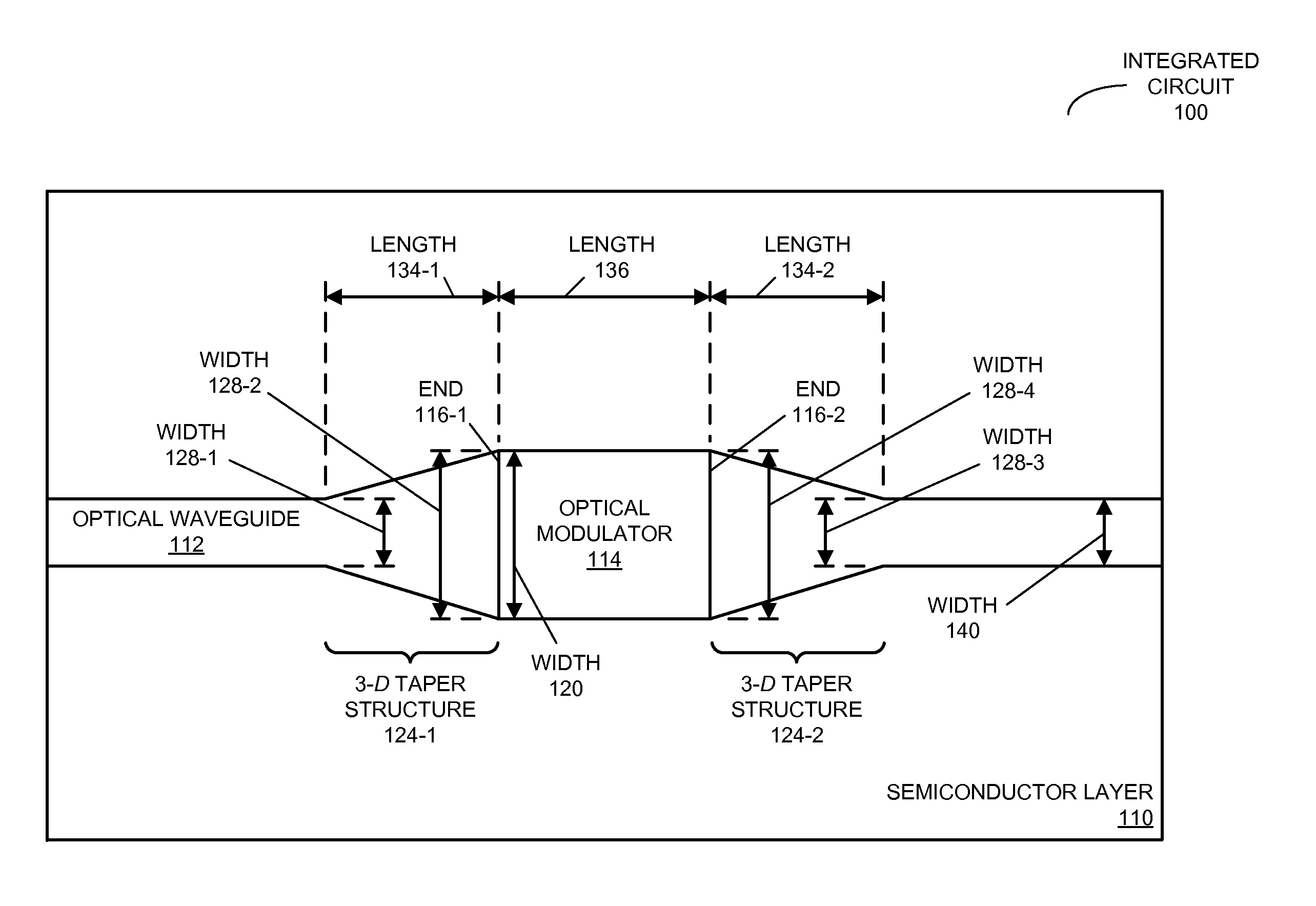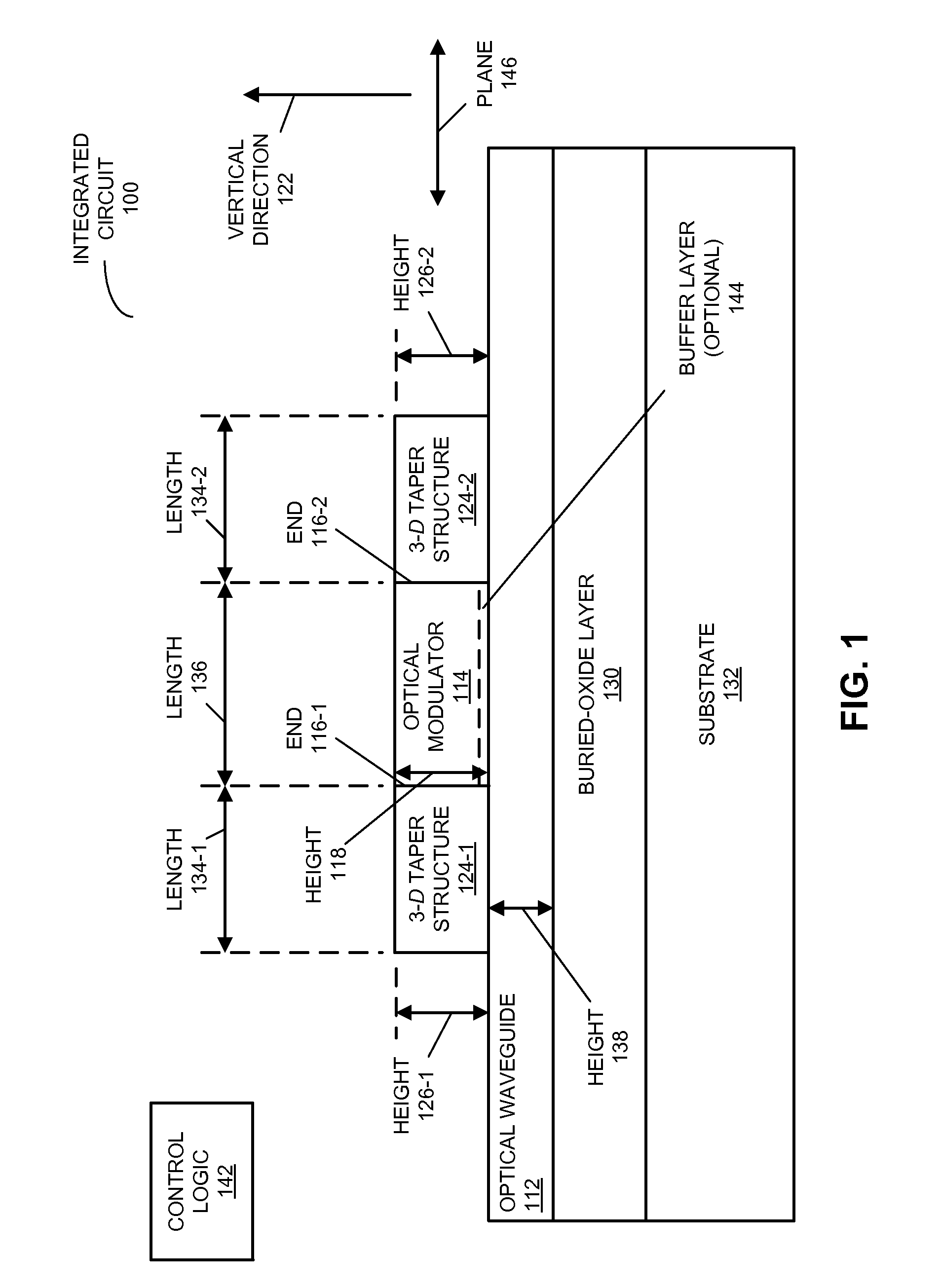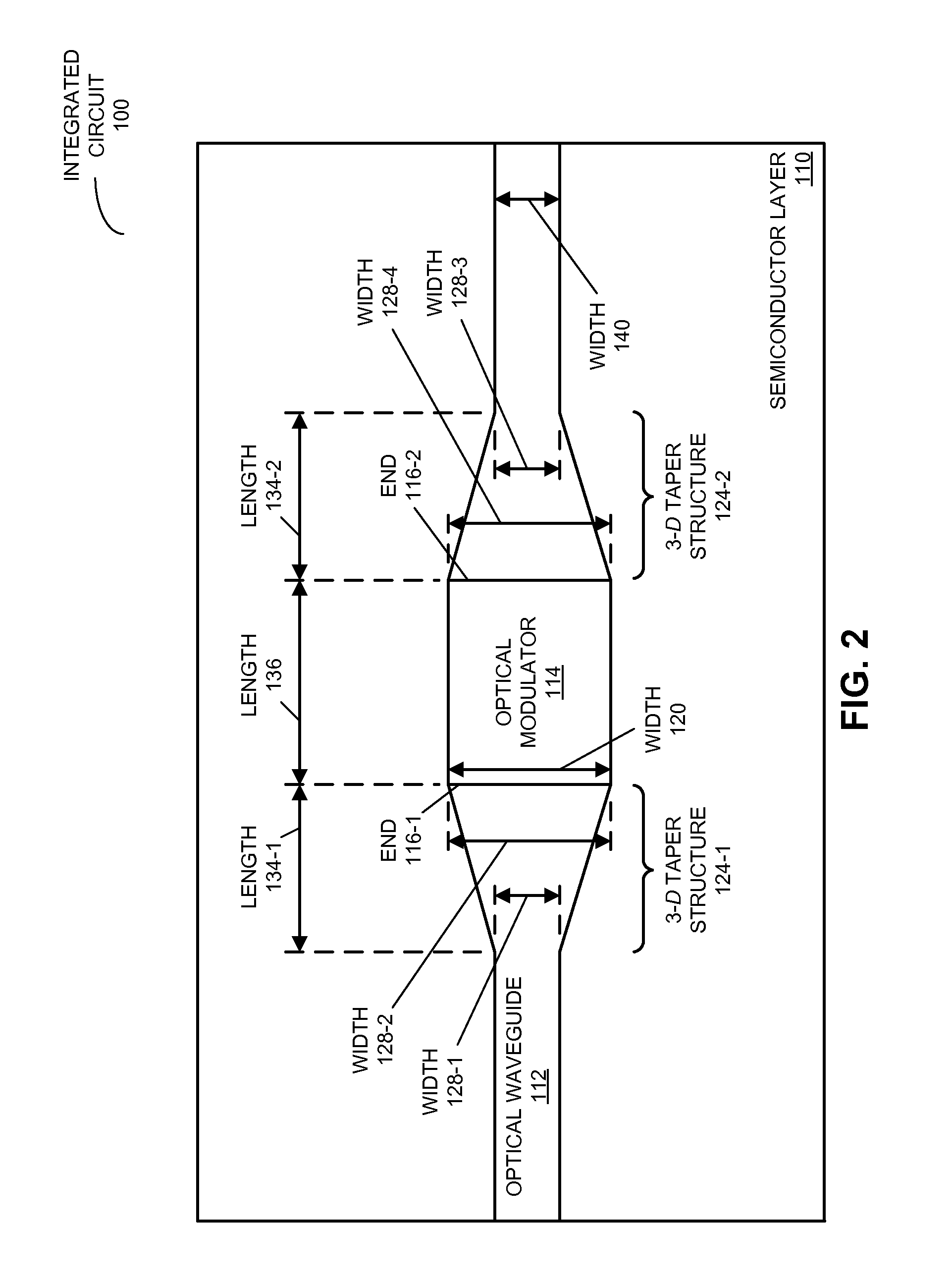Optical modulator with three-dimensional waveguide tapers
a technology of optical modulators and waveguides, applied in the field of optical modulator circuits, can solve the problems of difficult integration of light modulators with silicon-based optical waveguides, difficult use of light modulators, and complex construction of efficient light modulators. achieve the effect of reducing optical coupling loss
- Summary
- Abstract
- Description
- Claims
- Application Information
AI Technical Summary
Benefits of technology
Problems solved by technology
Method used
Image
Examples
Embodiment Construction
[0023]Embodiments of an integrated circuit, a system that includes the integrated circuit, and a method for selectively optically modulating an optical signal in the integrated circuit are described. This integrated circuit includes an optical waveguide defined in a semiconductor layer. Furthermore, light is coupled between the optical waveguide and an optical modulator, which is disposed on the optical waveguide, using 3-dimensional (3-D) taper structures that are proximate to the ends of the optical modulator. The cross-sectional areas of these 3-D taper structures transition, over a distance, from that of the optical waveguide (distal from the optical modulator) to that of optical modulator (proximate to the ends of the optical modulator). In this way, a spatial extent of an optical mode in the optical waveguide and a spatial extent of an optical mode in the optical modulator may be approximately matched to reduce the optical loss when light is coupled to or from the optical modu...
PUM
| Property | Measurement | Unit |
|---|---|---|
| optical-mode size | aaaaa | aaaaa |
| optical-mode size | aaaaa | aaaaa |
| lengths | aaaaa | aaaaa |
Abstract
Description
Claims
Application Information
 Login to View More
Login to View More - R&D
- Intellectual Property
- Life Sciences
- Materials
- Tech Scout
- Unparalleled Data Quality
- Higher Quality Content
- 60% Fewer Hallucinations
Browse by: Latest US Patents, China's latest patents, Technical Efficacy Thesaurus, Application Domain, Technology Topic, Popular Technical Reports.
© 2025 PatSnap. All rights reserved.Legal|Privacy policy|Modern Slavery Act Transparency Statement|Sitemap|About US| Contact US: help@patsnap.com



